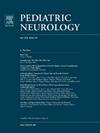pik3ca相关的过度生长谱:探索胎儿到婴儿的大脑发育。
IF 3.2
3区 医学
Q2 CLINICAL NEUROLOGY
引用次数: 0
摘要
背景:大脑畸形-毛细血管畸形-多小脑回综合征(MCAP)是一种罕见的神经系统疾病,其特征是脑大小异常、血管畸形和身体过度生长。MCAP是由PIK3CA的体细胞嵌合引起的,PIK3CA是调控细胞生长和存活的关键基因,是PIK3CA相关过度生长谱中的一种疾病。方法:我们提出了一个独特的临床报告的男性婴儿诊断为MCAP从产前阶段到年龄12个月。产前成像显示心室不对称,后证实为大脑畸形。遗传分析鉴定出PIK3CA突变。患者接受了早期干预,包括脑室-腹膜分流放置和后窝减压。结果:尽管早期干预,患者仍出现进行性大颅、脑积水和明显的神经发育迟缓。多学科管理和持续的神经成像对于解决与该疾病相关的并发症至关重要。结论:该病例强调了多学科护理和持续神经影像学监测的迫切需要,以有效地导航与pik3ca相关的过度生长谱相关的进行性并发症。诊断障碍和管理的挑战,内在的紊乱的自然过程阐明。尽管目前的治疗方法只能控制症状,但新兴疗法有望改善患者的预后。本文章由计算机程序翻译,如有差异,请以英文原文为准。
PIK3CA-Related Overgrowth Spectrum: Exploring brain growth from fetus to infant
Background
Megalencephaly-capillary malformation-polymicrogyria syndrome (MCAP) is a rare neurological disorder characterized by abnormal brain size, vascular malformations, and body overgrowth. MCAP is caused by somatic mosaicism of PIK3CA, a crucial gene in regulation of cell growth and survival, and is one of the disorders in the PIK3CA-related overgrowth spectrum.
Methods
We present a unique clinical report of a male infant diagnosed with MCAP from prenatal stages to age 12 months. Prenatal imaging unveiled ventricular asymmetry, later confirmed postnatally as megalencephaly. Genetic analysis identified a PIK3CA mutation. The patient underwent early interventions, including ventriculoperitoneal shunt placement and posterior fossa decompression.
Results
Despite early interventions, the patient developed progressive macrocrania, hydrocephalus, and significant neurodevelopmental delay. Multidisciplinary management and continuous neuroimaging were crucial in addressing complications associated with the disorder.
Conclusions
This case underscores the critical need for multidisciplinary care and continual neuroimaging surveillance to effectively navigate the progressive complications associated with PIK3CA-related overgrowth spectrum. The diagnostic hurdles and management challenges intrinsic to the disorder's natural course are elucidated. Although current treatments manage symptoms, emerging therapies hold promise for improving patient outcomes.
求助全文
通过发布文献求助,成功后即可免费获取论文全文。
去求助
来源期刊

Pediatric neurology
医学-临床神经学
CiteScore
4.80
自引率
2.60%
发文量
176
审稿时长
78 days
期刊介绍:
Pediatric Neurology publishes timely peer-reviewed clinical and research articles covering all aspects of the developing nervous system.
Pediatric Neurology features up-to-the-minute publication of the latest advances in the diagnosis, management, and treatment of pediatric neurologic disorders. The journal''s editor, E. Steve Roach, in conjunction with the team of Associate Editors, heads an internationally recognized editorial board, ensuring the most authoritative and extensive coverage of the field. Among the topics covered are: epilepsy, mitochondrial diseases, congenital malformations, chromosomopathies, peripheral neuropathies, perinatal and childhood stroke, cerebral palsy, as well as other diseases affecting the developing nervous system.
 求助内容:
求助内容: 应助结果提醒方式:
应助结果提醒方式:


